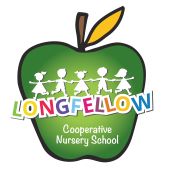Now enrolling for the 2023-2024 school year! Register Here
About the class
The 4′s class has a maximum enrollment of 18 children between 4 and 5 years of age. Two licensed teachers and a co-op parent are in the classroom each day.
To be eligible to enroll, a child must be 4 years of age by October 31st of the enrollment year.
Weekly schedule
Monday through Friday
12:00 pm to 3:00 pm
What do students learn?
The 4’s class is designed to prepare students to enter kindergarten. The STEAM (science, technology, engineering, the arts, and mathematics) curriculum emphasizes problem solving, letter identification, and socialization through group play and activities.
- In circle time, children participate in activities, educational lessons, role playing, games, songs, dances & more!
- During centers time, children play and learn through exploration of the world with sensory materials. Centers time encourages children to grow socially and personally when they engage in free play and learn about science, building, literature, imaginative play and much more!
- During outdoor play, children develop physical coordination and socialization skills, while enjoying fun on the jungle gym, sandbox, playhouse, trikes, chalk, balls, strollers and more!
- Teacher-led small groups focus on fine motor skills, creative and cognitive learning through creating art, participating in fun activities with shapes, colors, letters and numbers.
Sample class schedule
- 12:00 – 12:10: Arrival – Greet friends, organize coats/backpacks
- 12:10 – 12:30: Circle Time – Group chat, carry out and review daily tasks, singing, teaching daily theme
- 12:30 – 1:30: Learning Centers & Small Group Activities
- Blocks
- Sensory Tables (sand, beans, water etc.)
- Dramatic Play
- Science
- Art
- Puzzles & Games
- 1:30 – 1:45: Clean-up time and wash hands for snack
- 1:45 – 2:00: Story Time
- 2:00 – 2:15: Snack Time and Pack Backpack
- 2:15 – 2:45: Outside Play (in fenced playground)
- 2:45 – 3:00: Review day and Goodbye Circle
- 3:00: Dismissal
Why choose the 4’s program at LNS?
The LNS 4’s Program is a program that integrates Art and Literacy with the state approved Creative Curriculum.
Why art? Art is a tactile medium that can establish long term memories. This medium impacts children’s learning in a very fundamental way. Through exploration of their physical environment artistically, small motor skills are refined. Each time a child uses scissors to cut or tear paper, fine motor skills are developed. The use of markers, paint brushes, and crayons allow young ones to experience lines, curves, and shapes. Writing proficiency and visual discrimination are a direct result of these early developmental skills.
In preschool, Social/Emotional domains are strong indicators of a successful transition to Kindergarten. Children’s art reflects their social and emotional development. Art often allows preschoolers to express feelings they may not be able to verbalize. A child’s drawing of their family can reveal their relationship to family members and their developmental skill level. Artistic expression is a safe medium to explore the world. Children’s art helps to establish individuality and originality; it is a natural vehicle to explore self-image and emotions.
Cognitive skills are also developed and demonstrated through painting and sculpture. Through the process of creating a structure, fundamental STEM (science, technology, engineering, math) skills are engaged. Many experts in the field of education are making a case to change STEM to STEAM by adding Art to these sciences. Current research identifies Art and Music as essential components in the creative process. STEM concepts are naturally imprinted through artistic exploration. Concepts such as cause and effect, critical thinking, and organization are experienced through the association of art and music. Preschooler’s experimentation with various media allow for trial and error learning. These qualities are the basis for forming scientific hypotheses, as well as mathematical and technological concepts.Finally, Art creates a dialogue. A preschooler’s vocabulary is extended. For example, while a child is using blocks to create a building, a teacher can read books to introduce new vocabulary words such as arch, foundation, moat, etc. In this way, literacy offers a way to introduce a concept. This segues into new conversation employing extended vocabulary and concepts. Communication is a fundamental component of Art. Children explain their art to others. Sentences are extended and vocabulary is expanded. Listening and speaking is practiced. Dr. Lev Vygotsky (an early childhood theorist) believed cognitive development centers on the idea of social interaction. Dr. Vygotsky called this development collaborative or cooperative dialogue. This interaction contributes to the process of cognitive development. As adults, effective communication skills, creativity, curiosity, and flexibility are valued. A preschool Art/Literacy based curriculum is a strong foundation for becoming a successful adult.
